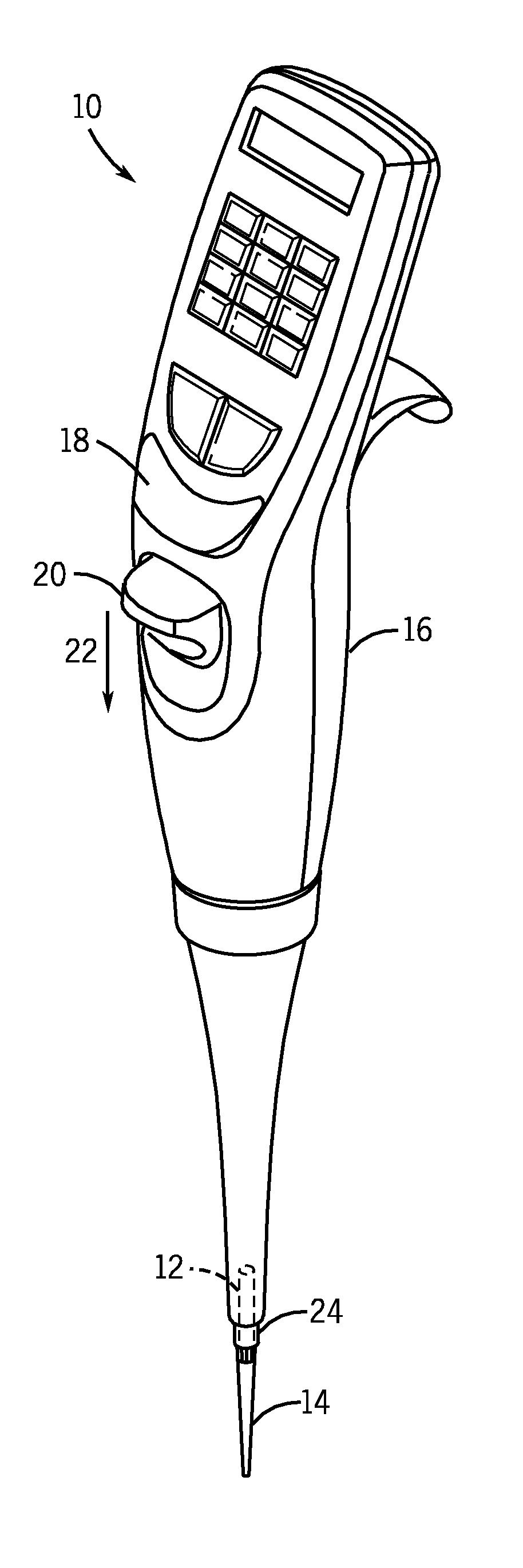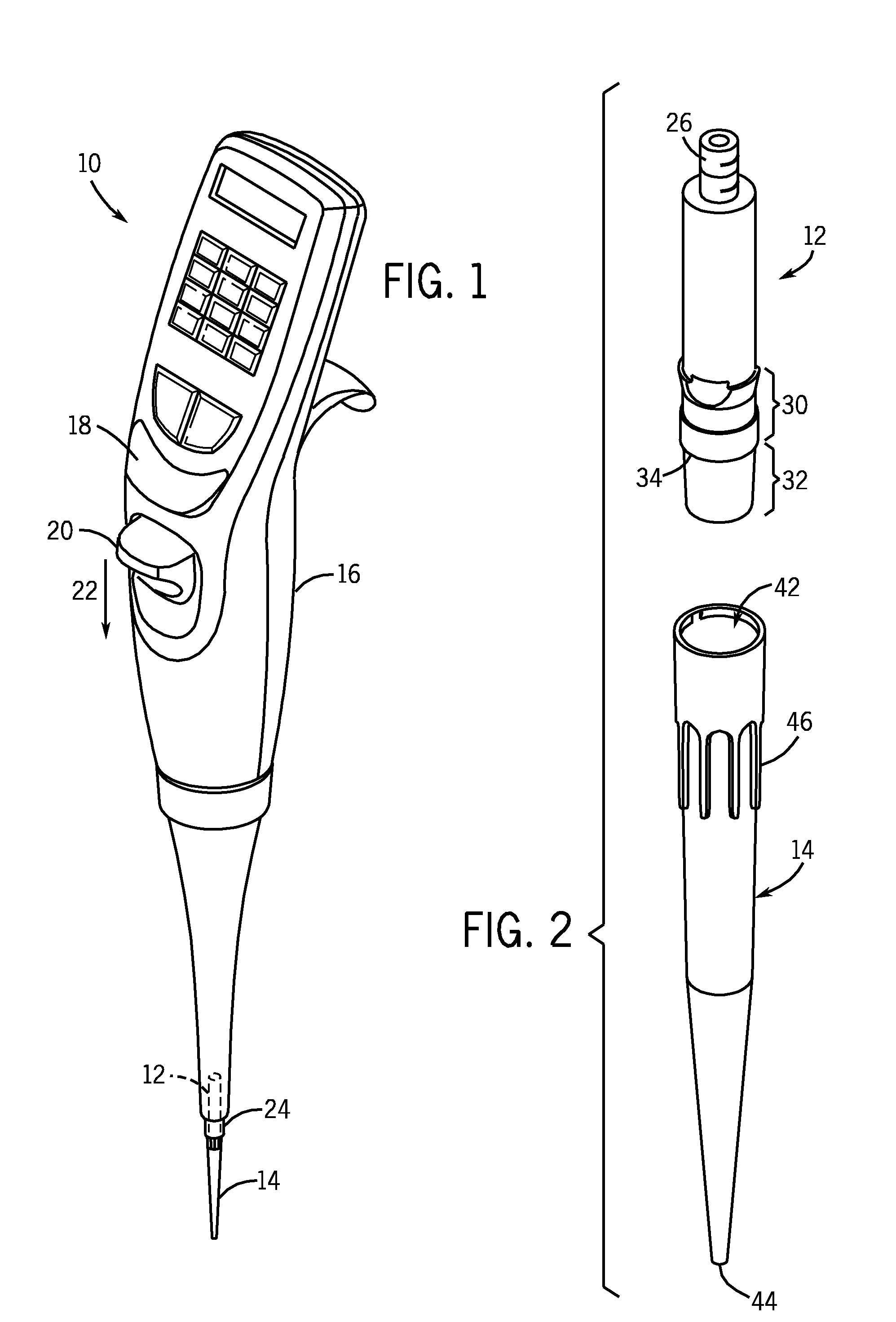Disposable Pipette Tip
a pipette tip and disposable technology, applied in the field of pipettes and automated liquid handling systems, can solve the problems of over-center locking engagement and ergonomic, and achieve the effects of facilitating reliable engagement of the sealing ring, reducing insertion force, and maintaining the roundness of the sealing area
- Summary
- Abstract
- Description
- Claims
- Application Information
AI Technical Summary
Benefits of technology
Problems solved by technology
Method used
Image
Examples
Embodiment Construction
[0030]FIG. 1 illustrates a hand-held, electronic air displacement pipette 10 that incorporates a pipette mounting shaft 12 and a disposable pipette tip 14 constructed in accordance with the preferred embodiment of invention. The pipette 10 includes a housing 16 designed to be held in the palm of the user. Internal components of the pipette (not shown) drive a piston that extends through a seal assembly to displace air within an aspiration and dispensing cylinder. The pipette mounting shaft 12 is threaded or otherwise attached to the lower end of the pipette such that it is in fluid communication with the aspiration and dispensing chamber. The attachment of the mounting shaft to the pipette is not particularly relevant to the concepts of the invention, and is well known in the art. Button 18 is provided for the user to instruct the electronic pipette to aspirate and dispense. The pipette 10 also includes a lever 20 that is actuated in the direction of arrow 22 to move an ejection mec...
PUM
 Login to View More
Login to View More Abstract
Description
Claims
Application Information
 Login to View More
Login to View More - R&D
- Intellectual Property
- Life Sciences
- Materials
- Tech Scout
- Unparalleled Data Quality
- Higher Quality Content
- 60% Fewer Hallucinations
Browse by: Latest US Patents, China's latest patents, Technical Efficacy Thesaurus, Application Domain, Technology Topic, Popular Technical Reports.
© 2025 PatSnap. All rights reserved.Legal|Privacy policy|Modern Slavery Act Transparency Statement|Sitemap|About US| Contact US: help@patsnap.com



